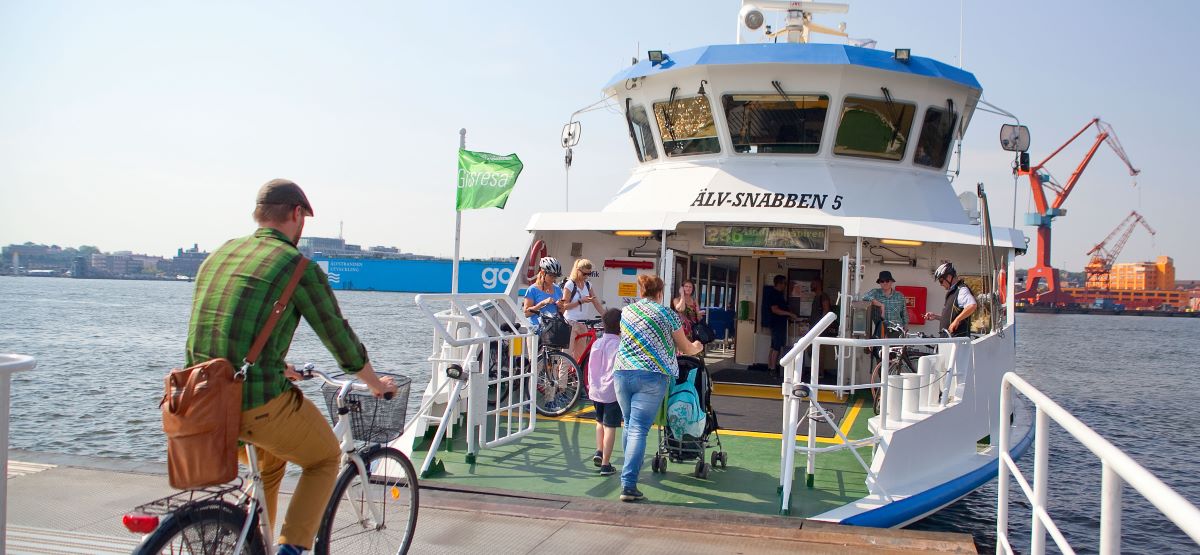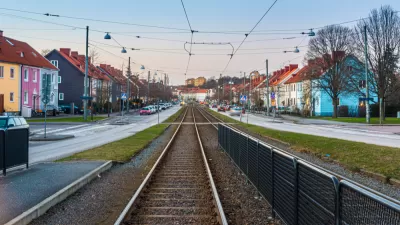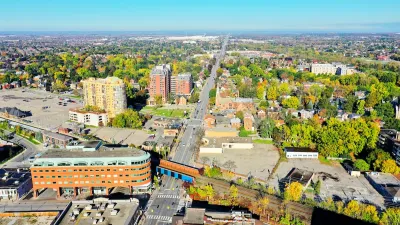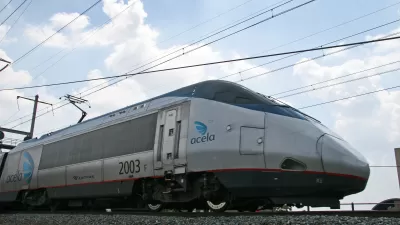Smart cities around the world are finding creative ways to make walking, cycling, public transit, carsharing and delivery services more attractive and efficient. Way to go!

Greetings from Göteborg (also spelled, Gothenburg), Sweden, where I recently spoke about sustainable city planning at the Mobility in Smart Cities Symposium. Göteborg is an amazing city which is applying very smart planning. Let me share some highlights.
In 2013, Goteborg, with just over a half-million residents, became the world’s smallest city to implement congestion pricing. The city also has an extensive tram system and a new Bus Rapid Transit system that share an extensive network of dedicated traffic lanes that allow public transit vehicles to avoid congestion when traveling through the city.

The city also has a network of ferry boats that carry thousands of pedestrians and cyclists between neighborhoods along its waterfront.

In addition, Goteborg has developed a extensive bicycle route network and bikesharing stations around the city, and during the last decade has redeveloped its downtown core, once crowded with cars, into a grid of cobblestone streets that limit automobile traffic volumes and speeds. It is also applying smart growth development policies and parking management strategies.
The overall result of these policies is terrific: although the city is very modern, dynamic and affluent, it has a low automobile mode share, minimal automobile traffic and attractive streets.
Since Goteborg is the home of the Volvo corporation, I used his opportunity to investigate the state-of-art in clean and quite buses, a critical issue in creating more attractive cities, as Lindy Day recently discussed in her Planetizen blog, City Living Without the Racket.
During the Smart Cities Symposium, Volvo demonstrated its new hybrid electric buses, which include several features to minimize urban noise. These buses have relatively large battery packs plus quick recharging stations at some bus stops, which allow the buses to operate entirely in electric mode in central districts and only use their diesel engines in outlying areas. The manufacture claims that under suitable conditions they have lower total overall operating costs than conventional diesel buses.
I also spoke with leading diesel engineers to find out about other potential ways to reduce diesel bus noise. Buses that meet the new Euro VI standard tend to be quieter than older models, but still noisier than optimal. According to the experts, it is possible to reduce noise even more by designing vehicles with more engine isolation, larger mufflers, different tuning, and active noise suppression. This would moderately increase production costs and may slightly reduce fuel economy, but I suspect the results would be worthwhile because quieter buses would attract more passengers and help create more attractive and compact cities; a 5-10% increase in purchase or fuel consumption would pay for itself if the buses attract 10% more discretionary travellers (people who would otherwise drive).
Of course, Goteborg is not the only city that is using new technologies to help make public transit more attractive. For example, all new buses purchased by the IETT transit agency in Istanbul, Turkey have bike racks, free onboard wifi services and USB ports at each seat, amenities that have minimal extra cost when incorporated into new buses. Other cities are upgrading train stations and bus stops, providing real time train and bus arrival information, and more convenient transit fare payment options.
These are examples of ways that smart cities are making walking, cycling, public transit, carsharing and delivery services, and therefore urban living, more attractive and efficient.

Alabama: Trump Terminates Settlements for Black Communities Harmed By Raw Sewage
Trump deemed the landmark civil rights agreement “illegal DEI and environmental justice policy.”

Study: Maui’s Plan to Convert Vacation Rentals to Long-Term Housing Could Cause Nearly $1 Billion Economic Loss
The plan would reduce visitor accommodation by 25% resulting in 1,900 jobs lost.

Planetizen Federal Action Tracker
A weekly monitor of how Trump’s orders and actions are impacting planners and planning in America.

Grand Rapids Mayor Proposes Garage Conversion Plan
The mayor says allowing homeowners to convert garages to dwelling units could alleviate the city’s housing shortage.

Baltimore Ordered to Improve Sidewalk Accessibility
The city is one of many to face lawsuits for failing to comply with the Americans with Disabilities Act.

This Toronto Suburb Has More Bus Riders Than Columbus, Ohio
Brampton, Ontario used gradual improvements in service to prove that if you build it, they will ride.
Urban Design for Planners 1: Software Tools
This six-course series explores essential urban design concepts using open source software and equips planners with the tools they need to participate fully in the urban design process.
Planning for Universal Design
Learn the tools for implementing Universal Design in planning regulations.
Smith Gee Studio
Alamo Area Metropolitan Planning Organization
City of Santa Clarita
Institute for Housing and Urban Development Studies (IHS)
City of Grandview
Harvard GSD Executive Education
Toledo-Lucas County Plan Commissions
Salt Lake City
NYU Wagner Graduate School of Public Service






























